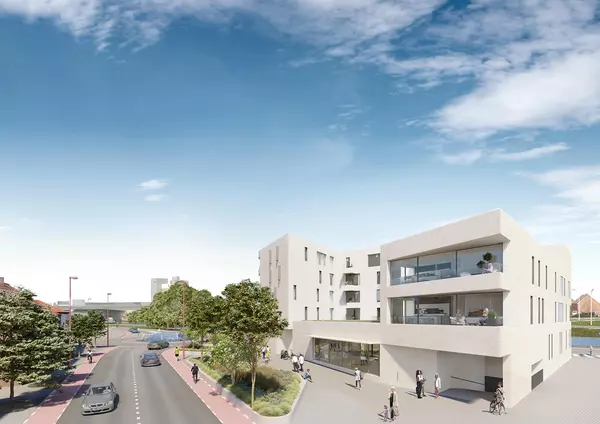Will home prices fall in 2025 with more inventory?
Fluctuating interest rates have been a feature of the housing market over the last three years. As mortgage rates rose, homebuyer demand slowed and inventory grew. In 2025, mortgage rates have stayed stubbornly high for yet another spring buying season. Today, home sales still remain super slow.
Our 2025 housing market predictions are based on the assumption that lower mortgage rates will spur demand and boost the number of homes sales transactions. Likewise, if mortgage rates jump again, potential homebuyers will feel that and remain sidelined.
But there are new variables to consider and the macro-economic story is shifting.
New policies on trade tariffs, immigration and reduced spending have blocked growth and put recession talk back on the table. Unemployment is increasing and we haven’t seen that in this country for many years.
How will the housing market change as these economic assumptions change? How quickly can we measure changes in housing market supply and demand as these new conditions take over? We’re only two months into the new government policies. The U.S. economy was strong as we entered the new year. These are only early shifts and we’ve been on recession watch for most of the last three years, so this isn’t new.
But here’s the thing: we’ve been assuming that lower rates increase demand faster than supply — mostly because the economy was growing and unemployment was low. As a result, interest rates were the important lever. Now, if homeowners are sensing the first economic downturn in a long time, do those changes impact supply faster than falling rates spur demand? That’s the shift we’re watching for.
Let’s dive in.
New listings grew 7% from the week prior
Last week saw 68,000 newly listed single-family homes. As such, the pace of new listings seems to be picking up for the spring and the post-pandemic era.
There were nearly 7% more sellers last week than the week prior. Additionally, there were 14% more new listings unsold compared to this time last year. In fact, there were more new listings unsold last week than any mid-March since 2020 — just before the pandemic hit.
<\/script>Here’s the bottom line: This spring, more sellers are trying to sell their homes.
What is driving the sellers’ behavior? Is it economic vibes? Is it pent up “shadow” inventory for people who’ve delayed moving for three years?
Remember, seller volume has been very low for nearly five years. Essentially, every homeowner nationwide is locked in with an ultra-cheap mortgage. Homeowners that don’t have those rates are more likely to sell. So, as long as rates stay high, we’ll slowly emerge from the mortgage rate lock-in. That means more sellers in time.
On the other hand, we have noticed the vibes shifting in some areas.
In the DC Metro area, the new listings rate is higher. It’s not super high, but maybe the shift is underway. The D.C. housing market alone isn’t enough to move the needle nationally for new listings. The reason we pay attention is that it’s a potentially an example of what could happen in a macroeconomic shift.
That’s why I ask if these are the first of what might be called “bad economy sellers.” We haven’t had a bad economy with higher unemployment in 15 years.
Inventory growth speeds up due to new listings
Available inventory of unsold homes also had a pretty big increase last week, climbing 2% to 656,000. While this time of year it’s totally normal to build inventory each week, that’s a slightly faster build up than we expected.
This inventory increase is from the new listings. It came out to 13,000 more single-family homes on the market compared to the week prior. Last year, there were only five weeks in April, May and July that had inventory gains of more than that.
<\/script>We’ve been assuming that inventory will keep growing, albeit at a slower pace, than 2024. Right now we have 29% more homes on the market than this time last year, and I expect that to decrease to 18% to 19% more homes on the market by the end of the year. That means that we should see the gap between 2024 inventory and 2025 inventory shrinking in the next few months. If the gap continues to grow like it did this week, that will be a new signal for the rest of the year.
Good news: Weekly pending home sales went up
The good news is that the weekly count of pending home sales is climbing for the spring. There were 66,000 single-family homes that took offers and started contracts last week. That’s up a nice 4% for the week.
Home sales are almost exactly where they were last year. In Q2 2024, mortgage rates were nearing their most expensive level for the year so sales were slowing at the time. Now, we have momentum in the other direction. Mortgage rates are 50 basis points cheaper than they were earlier in the year.
<\/script>I’m going to predict that next week’s data shows the weekly pending home sales at a level slightly above the same week a year ago. I’m just assuming that this would happen because Q2 2024 was really slow; the comparison gets easier for the next quarter.
Additionally, there are significantly fewer immediate sales happening in 2025. Potential homebuyers know they can wait for either the right deal or better financing. So, even if sales tick up, the time on market is generally longer, and buyers can wait for shifts in rates to jump when the timing is right.
Home prices ticked up ahead of spring
Most of our home price measures ticked up ahead of the spring season. The median price for last week’s pending home sales came in just under $390,000. That’s basically unchanged from the prior week and it’s exactly the same median price as last year at this time.
I’m expecting a slight bump up in next week’s sales prices to keep that trend line slightly elevated over last year. The pattern has homes about 2% more expensive than they were selling for in 2024. As supply grows and mortgage rates remain elevated, I don’t see any catalyst for home prices to grow beyond that.
<\/script>I’m on the lookout for negative pricing pressures. There aren’t signals of home price declines, but they’re basically flat from 2024. Meanwhile the median price of the active listings is $439,000. That’s up almost 1% for the week with the spring, and it’s nearly 1% greater than last year at this time. Home prices are essentially unchanged for a year. The active market is up 1%, and the weekly pending sales were unchanged.
The thing to watch for in home prices are whether these turn negative with increased supply. If mortgage rates were to jump, prices would correct down. As far as new economic vibes, it’s far too early to see those vibes in sales prices.
Price reductions increased alongside prices
The share of homes on the market with price reductions moved up last week to 34%. That’s a pretty substantial number for mid-March.
It’s natural for price cuts to accelerate in the spring. Any homes that were listed in March and don’t have offers in April will include price cuts.
<\/script>Two things matter here: the absolute level of price cuts, which is high now, and the speed at which listings are cutting. The key takeaway for the price reductions data is that there is no bullish signal for home prices in the coming months.
Categories
Recent Posts










